Peter Gill (School of Chemistry, University of Sydney)
Amir Karton (School of Science and Technology, University of New England)
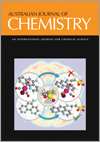
Australian Journal of Chemistry
Volume 76 Number 12 2023
Special IssueDedication to Brian Yates
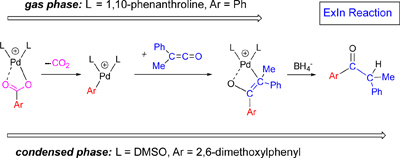
Although palladium-mediated extrusion–insertion (ExIn) operates for decarboxylation of benzoate followed by insertion of phenylmethylketene, low yields in the solution phase arise from side reactions involving dimerisation of the ketene.
CH23026 Abstract | CH23026 Full Text | CH23026PDF (1.6 MB) | CH23026Supplementary Material (1.9 MB) Open Access Article
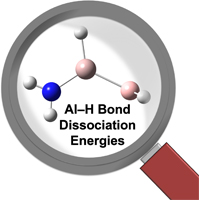
Aluminium hydride species have broad significance in fields ranging from organic synthesis to materials science. We present a dataset of highly accurate homolytic Al–H bond dissociation energies calculated at the CCSD(T)/CBS level. We examine the chemistry of aluminium-centred radicals and assess the performance of DFT procedures.
CH23042 Abstract | CH23042 Full Text | CH23042PDF (908 KB) | CH23042Supplementary Material (833 KB) Open Access Article
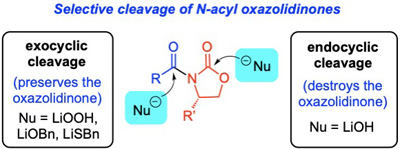
Chiral oxazolidinones can be selectively cleaved from their N-acyl derivatives using LiOOH, LiOBn or LiSBn, but not LiOH, which instead favours opening of the oxazolidinone ring. DFT calculations show that the selectivity depends on the barrier for decomposition of the tetrahedral intermediate, which depends on the electron-donating capacity of the introduced nucleophile. (Image credit: Elizabeth Krenske.)
CH23086 Abstract | CH23086 Full Text | CH23086PDF (1021 KB) | CH23086Supplementary Material (243 KB) Open Access Article
1H NMR spectra of the boranes show that the two different group of hydrogens in the H3BXH3 (X═B, N and P) compounds have different roles and 11B NMR indicates the boron chemical environments are also different. (Image credit: Feng Wang.)
CH23095 Abstract | CH23095 Full Text | CH23095PDF (1.3 MB) Open Access Article
In a typical computational chemistry study, the use of a small ‘basis set’ is more efficient but less accurate. The accuracy can be improved in several ways, the obvious ones being the use of (1) a large but less efficient basis set, (2) a no-cost but less flexible correction, and (3) an optimally tuned small basis set. Which is the best? We are finding it out in this investigation. (Image credit: Bun Chan.)
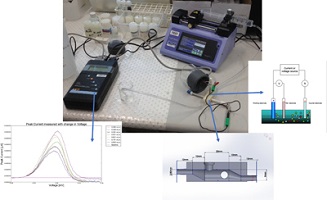
This paper presents preliminary results of a continuous analysis of metal ions using portable digital voltammeter and specifically designed 3‐D‐printed flow‐cell device. The design of the flow‐cell included Laminar Flow simulations in order to maximise the concentration of ions to the working electrode of the voltammeter. The purpose of the flow‐cell was to eliminate the exposure of the voltammeter operator to hazardous biological or industrial samples such as urine or petroleum respectively. (Image credit: Magdalena Wajrak.)
CH23112 Abstract | CH23112 Full Text | CH23112PDF (2.2 MB) Open Access Article
Why has no LnM(η1-H2) been reported so far? What conditions should a metal fragment fulfill to favor this coordination mode? We report our answer to these questions with a combination of DFT calculations and statistical analysis. (Image credit: L. Morán-González and F. Maseras.)
The analyses of spectra for a wide range of substituted toluenes indicate a large variation in methyl group structures, however, quantum chemistry calculations are shown to predict little variation. This discrepancy is attributed to an interaction between the methyl torsion (internal rotation) and vibrations affecting the experimental analyses. (Image credit: J. R. Gascooke and W. D. Lawrance.)
CH23122 Abstract | CH23122 Full Text | CH23122PDF (1.3 MB) | CH23122Supplementary Material (467 KB) Open Access Article
 , Daniel C. Southam
, Daniel C. Southam  , Mark Buntine, Kay Colthorpe, Susan Howitt, Elizabeth Johnson, Susan Jones, Jo-Anne Kelder, Sally Kift, Wendy A. Loughlin
, Mark Buntine, Kay Colthorpe, Susan Howitt, Elizabeth Johnson, Susan Jones, Jo-Anne Kelder, Sally Kift, Wendy A. Loughlin  , Glennys A. O’Brien, Simon Pyke
, Glennys A. O’Brien, Simon Pyke  , John Rice, Susan Rowland and Robyn Yucel
, John Rice, Susan Rowland and Robyn Yucel
The Science Threshold Learning Outcomes (TLOs) were developed by Prof. Brian Yates and Prof. Sue Jones, supported by Dr Jo-Anne Kelder, during 2010–2011 as part of the Learning and Teaching Academic Standards (LTAS) project. This manuscript documents their leadership and development of communities of practice, which have transformed tertiary science education in Australia. (Image credit: Daniel Southam.)
CH23137 Abstract | CH23137 Full Text | CH23137PDF (964 KB) Open Access Article